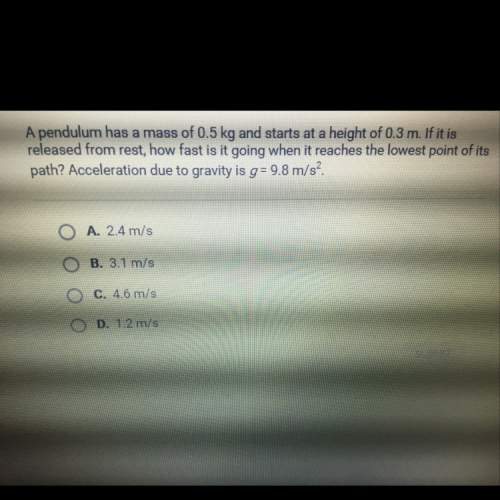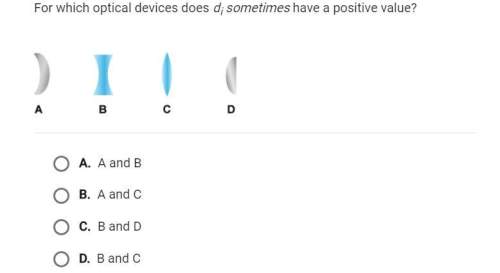
Physics, 08.12.2020 03:00 IkarosSakurai
You and you friend are sitting on the floor in an empty room a distance, d, apart, and you both have an equal mass. Assume the only force acting on you and your friend is the gravitational force you each exert on each other. No other forces are present.
a. How long will it take due to gravitational forces before you and your friend meet directly in the middle? Note: You may assume the acceleration remains constant throughout the motion.
b. In reality, the acceleration is not constant and is continually changing. Why is this?
c. If the acceleration is changing, what effect will this have on the derived time? Will the time increase, decrease, or stay the same? Why?

Answers: 2


Another question on Physics

Physics, 21.06.2019 19:30
Agymnast dismounts off the uneven bars in a tuck position with a radius of 0.3m (assume she is a solid sphere) and an angular velocity of 2rev/s. during the dismount she stretches out into the straight position, with a length of 1.5m, (assume she is a uniform rod through the center) for her landing. the gymnast has a mass of 50kg. what is her angular velocity in the straight position?
Answers: 2

Physics, 22.06.2019 18:00
What structural formula represents 4 electrons shared between two atoms?
Answers: 1

Physics, 22.06.2019 20:30
We will use a video to study faraday’s law of electromagnetic induction by analyzing the induction that occurs due a coil of copper wire sliding along an air track that passes through an external magnetic field. specifically, we will: examine some of the main principles behind faraday’s law. apply lenz’s law to determine the direction of the induced emf. take measurements of the induced emf from the voltmeter as the coil passes into and out of the external magnetic field. use the horizontal scale provided to determine the speed of the coil. calculate the magnetic field induced in the coil as it passes into and out of the external magnetic field.
Answers: 2

Physics, 22.06.2019 23:00
Hunter’s velocity was 4.5 m/s. at the end of his race, his velocity was the same. which best describes his movement? his movement stopped. his acceleration is zero. his time was constant. his acceleration was positive.
Answers: 1
You know the right answer?
You and you friend are sitting on the floor in an empty room a distance, d, apart, and you both have...
Questions

Mathematics, 15.07.2020 20:01


Mathematics, 15.07.2020 20:01


Mathematics, 15.07.2020 20:01

Mathematics, 15.07.2020 20:01


Mathematics, 15.07.2020 20:01

Computers and Technology, 15.07.2020 20:01

Mathematics, 15.07.2020 20:01

Computers and Technology, 15.07.2020 20:01


Mathematics, 15.07.2020 20:01

Biology, 15.07.2020 20:01


Health, 15.07.2020 20:01

History, 15.07.2020 20:01







